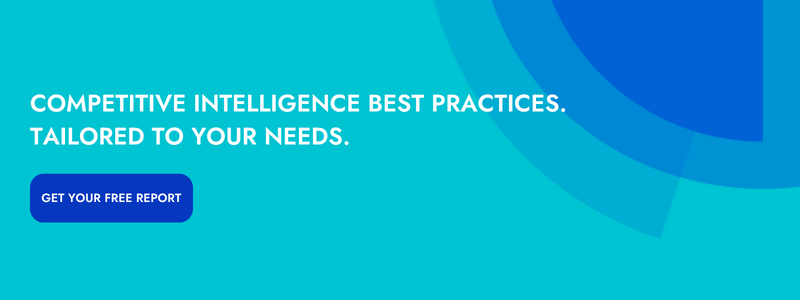In the traditional sense, competitive intelligence is used in marketing, product, and sales departments to understand their competitive landscape as well as how a company’s product stands up to the competition. However, Human Resources can also take advantage of competitive intelligence to inform company culture, benefits packages, and more to make sure their company remains competitive for attracting candidates and creating a work environment where people are happy to work. Let's dive into how you can utilize employee reviews and job postings to gather HR insights and maintain a competitive advantage in hiring and retaining employees.
Employee Reviews
Websites such as Indeed and Glassdoor are a huge resource for those in HR looking to understand their competitive landscape. They can help you understand what your competitors’ employees value, what benefits they are looking for in a company, and what the public perception is of your own company.
Values
Employee reviews are very helpful when understanding what people value in a company and what they don’t. These reviews can be used to inform company culture in terms of the employee experience on a day to day basis. This is especially helpful if you have done an internal eNPS (Employee Net Promoter Score) or have a feedback system in place to compare data against.
Employee values can vary widely. One common example of something that employees value, while also being a consistent point for companies to improve upon, is communication between executives and the rest of the team. If your company does not have strong communication, suggest a regular all-hands meeting where each department presents, or a recurring newsletter detailing department updates and changes. This type of feedback can be readily found in employee reviews.
Just as reviews can help to gauge what you should do to create a positive work environment, they can also help you figure out what not to do. For example, a common complaint is that there is no career growth at a company. You can work to prevent this type of feedback by creating promotional paths for your employees and educating them about opportunities for growth within your own company.
Over time, you will see trends in what people value across companies and throughout your industry. Taking these cues to include those values in your company culture will ensure that you create an environment that your employees love.
Benefits
Employee reviews can inform your choices when it comes to adding or adjusting benefits for your employees. Benefits are one of the most common things mentioned in employee reviews alongside values. These include vacation packages, health insurance, onsite facilities, commuter benefits, and more. When deciding on what benefits to add or adjust, reviews as well as internal feedback can help you understand where your budget is best spent. For example, the most cost-effective choice might not be one that people generally care about, and therefore wouldn’t have as much of an impact on company culture and the employee experience as desired.
As with values, you will see common trends in what people say when it comes to what benefits they want or what they like about their current benefits packages.
Benchmarking
Competitive intelligence is infinitely more useful when you understand how you compare to other competitors in your market, which is why it is critically important to monitor employee reviews for your own company. Also worth noting is that your competitors for HR may be different than those for Sales and Marketing. You are generally competing with companies in your geographic location as opposed to companies that are in the same industry as you. For example, if you are a tech company in Boston, you are likely competing for job applicants with other tech companies in the area, as opposed to companies in your specific industry against whom you are competing for customers.
The reviews of your company act as another feedback system, in addition to what you have internally, and can help you understand your public perception. If what you see from your internal feedback does not reflect what is being said publicly about your company, you can solicit reviews from your employees to better the public image of your company. This is particularly advantageous when it comes to recruiting, as this is one of the first places job applicants look before applying somewhere.
Job Postings
Job postings are an important source of competitive intelligence for HR departments. They show how the company is investing in its growth, what kinds of benefits they offer, and can be a good resource for putting together job descriptions that attract candidates to apply.
Investments in Growth
How your competitors are growing affects you if your company has plans to hire for those positions, and will also help you understand where they are investing and how your competitive landscape might change. Recruiting is more difficult if one of your competitors is recruiting for the same jobs, but positioning their roles to be more enticing than yours.
Additionally, if one of your competitors is hiring for several positions on its sales team, you can infer that they’re ramping up their sales efforts, and it is likely that you will see them come up in more deals as a result of their aggressive sales efforts. The same can be said for increased hiring in other departments too, such as marketing, product, or services. These postings help to understand where your competitors are investing in their growth and can help your team to be prepared for potential challenges in your competitive landscape.
Benefits Packages
The job market is continually growing tighter, making it critical for HR departments to understand what your competitors are offering in their benefits packages. One of the main job functions of HR is to support the growth of all departments in hiring. In addition to employee reviews, job postings can provide insight into what benefits offerings other companies are offering. Understanding this is an integral part of creating a competitive benefits package. For example, if your competitors are all offering unlimited PTO, but your company has a set number of vacation days, that can make recruiting more difficult. Take this as an opportunity to refresh your vacation policy; even if you can’t offer your employees unlimited PTO, there is likely something you can adjust to offer a more competitive package.
Diversity
Using the job postings of your competitors can be an effective way to inform your own as a way to attract a diverse group of candidates. Diversity in hiring is something most businesses strive for, and, in tight job markets, that can be difficult. One common suggestion to address diversity is to make sure that job postings are written with inclusive language and not specifically targeting one audience, while also stating a commitment to diversity. You can additionally name specific skill sets instead of experience requirements to attract a wider audience of applicants. A useful exercise in understanding how your competition is doing this is to read through their careers pages as well as the individual job descriptions to see the type of language they are using to attract candidates, and comparing those to your own to see if there are improvements you can make to your own.
Although the most common use case for competitive intelligence is not in the HR department, that doesn’t mean the benefits don’t exist. From informing culture and benefits decisions to helping craft job descriptions to encourage diverse hiring, there are many ways HR can use competitive intelligence to give their company the competitive advantage they need to be leaders in a competitive market.

Related Blog Posts
Popular Posts
-
 The 8 Free Market Research Tools and Resources You Need to Know
The 8 Free Market Research Tools and Resources You Need to Know
-
 6 Competitive Advantage Examples From the Real World
6 Competitive Advantage Examples From the Real World
-
 24 Questions to Consider for Your Next SWOT Analysis
24 Questions to Consider for Your Next SWOT Analysis
-
 How to Create a Competitive Matrix (Step-by-Step Guide With Examples + Free Templates)
How to Create a Competitive Matrix (Step-by-Step Guide With Examples + Free Templates)
-
 How to Measure Product Launch Success: 12 KPIs You Should Be Tracking
How to Measure Product Launch Success: 12 KPIs You Should Be Tracking





